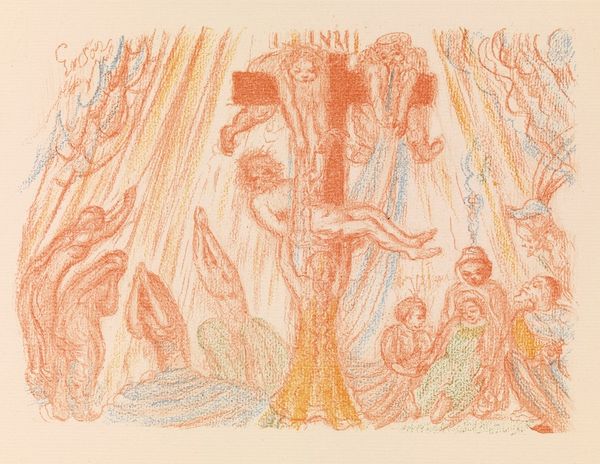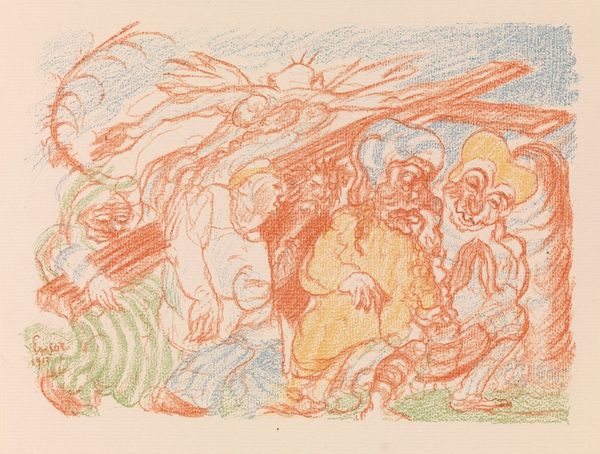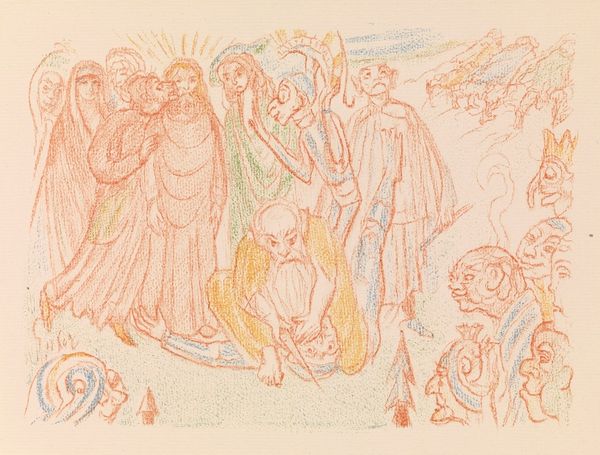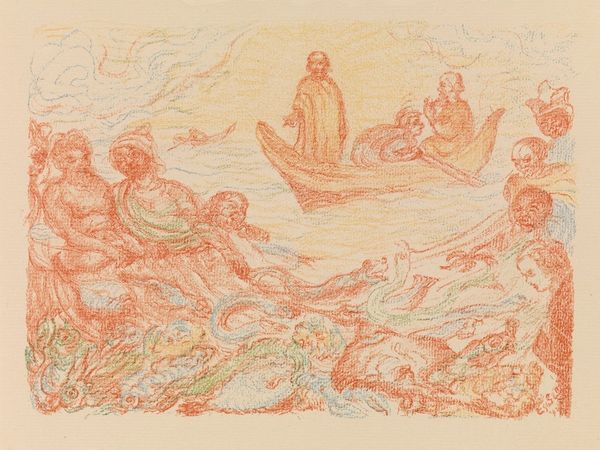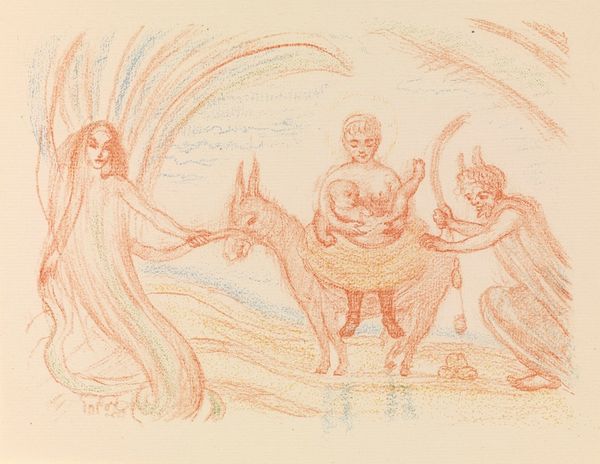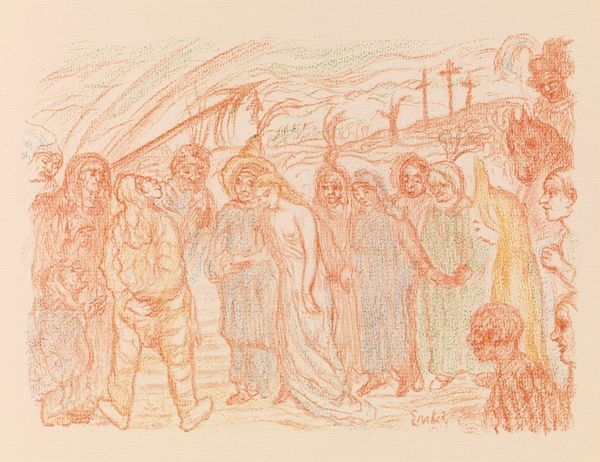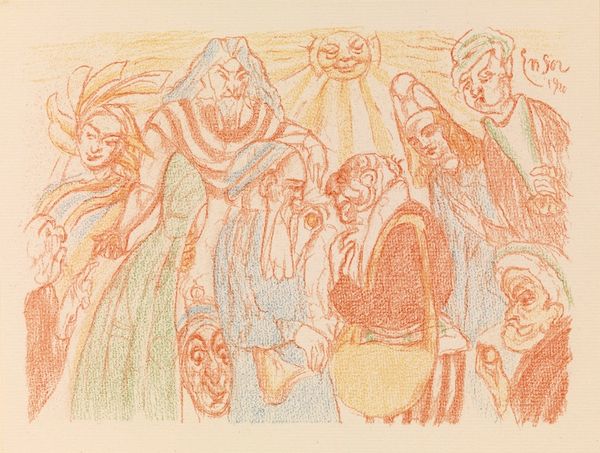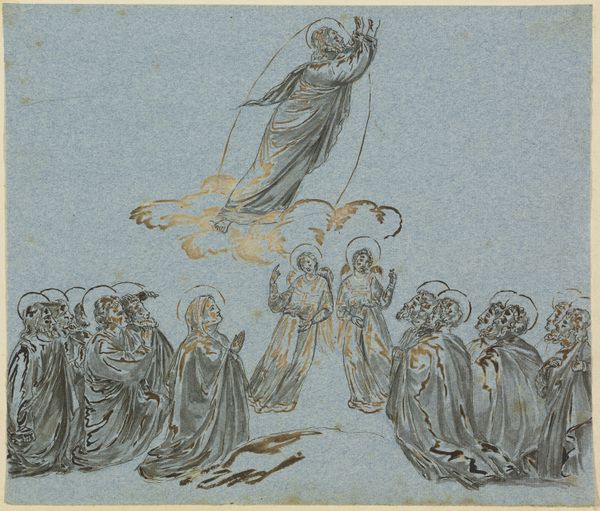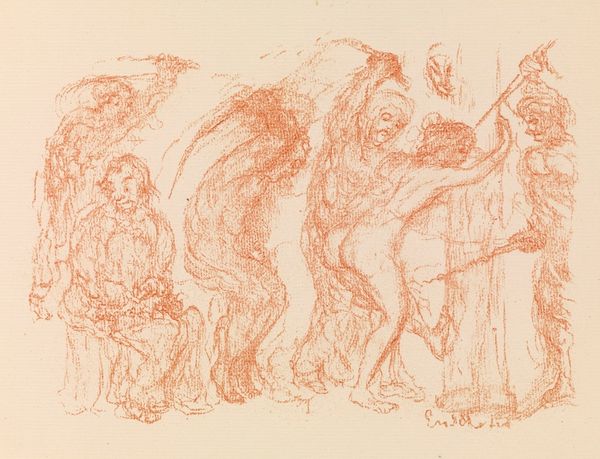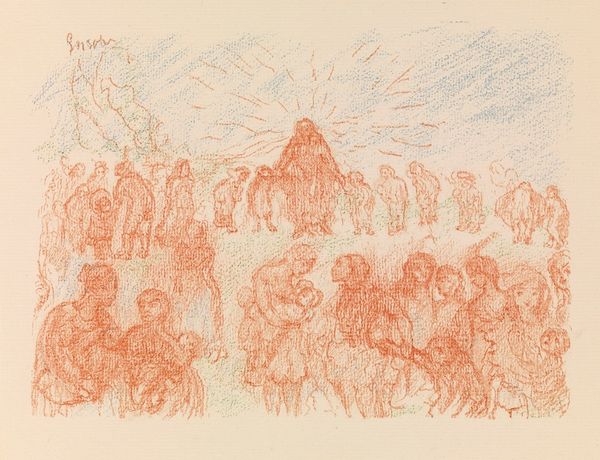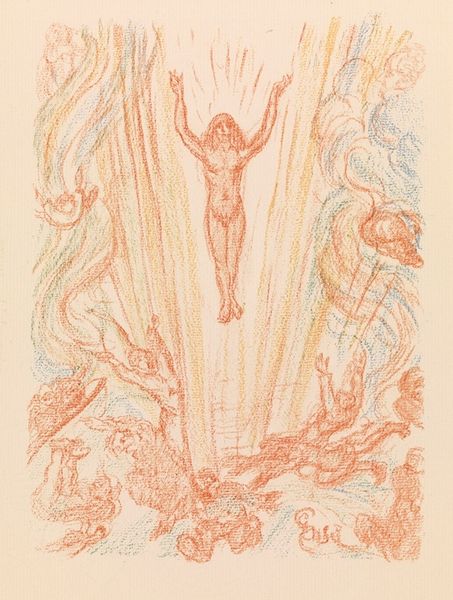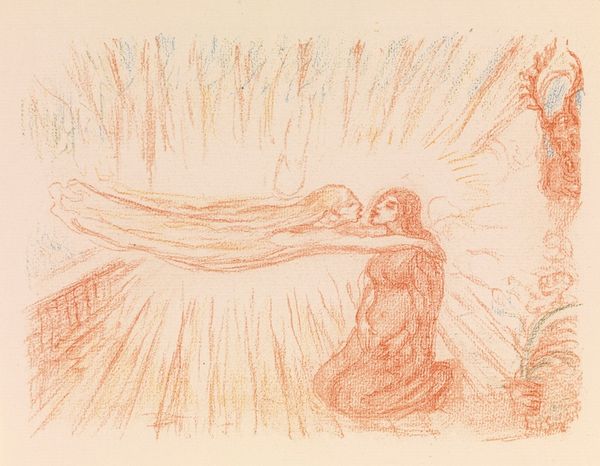
Copyright: Public Domain: Artvee
Curator: This delicate drawing, titled "The Angels Worship Mary", was created in 1921 by James Ensor using colored pencil. Editor: My immediate reaction is to its ethereal quality. The soft colors and lines lend an almost dreamlike quality to the piece. It feels quite intimate, even with so many figures present. Curator: Indeed. Considering Ensor's tendency toward the grotesque, this work stands out. The context is crucial, I think. It appears relatively late in his career when his relationship with religion, and perhaps with societal expectations, became more complicated. Editor: Absolutely. Look at the varying pressure applied with the colored pencil. There is a lightness to it all. He is using inexpensive materials, the artistic value is almost incidental. Are we witnessing, here, the democratization of devotion? Or just some colored pencils he had lying around? Curator: The latter question certainly appeals to the Materialist in you. Considering the historical impact of organized religion and the prevalent role of art within religious expression during Ensor's life, it is certainly worth contemplating its symbolic meaning in relationship to societal function. The angels and Mary exist as signifiers within a dominant, very present Catholic society, both endorsing and perhaps critiquing its symbolism. Editor: It's interesting that he chose to depict the Virgin Mary at all. What purpose do you imagine the image was designed for, or did he create for personal reflection only? Was it exhibited? What were the reviews? The historical documentation surrounding "The Angels Worship Mary" can surely assist with the analysis. Curator: Information regarding reviews or exhibits from that period is vague at best. It's tricky because his more scandalous pieces gained him notoriety. His personal writings show, I suspect, he simply needed a gentler language in times of peace after World War One, to offer humanity a visual, reverent caress of art. Editor: Well, whether it was intended for a public or private audience, Ensor clearly succeeded in creating an evocative piece through a modest production style that continues to spark interpretation even today. Curator: Precisely, prompting reflection on belief, artistic practice, and their complex interplay throughout history, to offer a gentle language for all to benefit from.
Comments
No comments
Be the first to comment and join the conversation on the ultimate creative platform.
